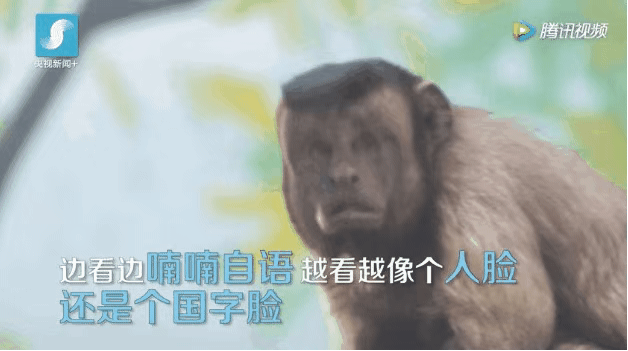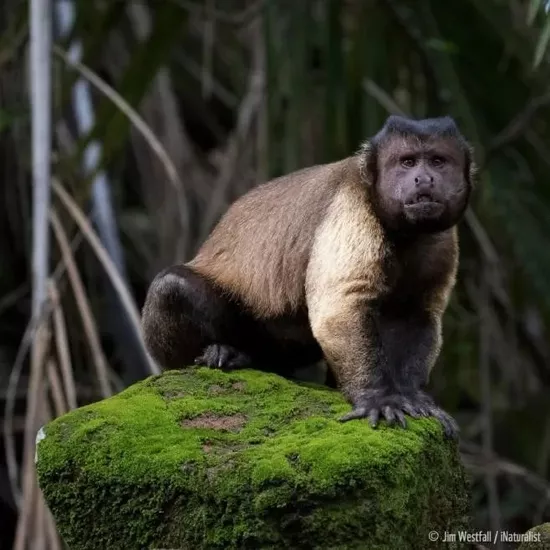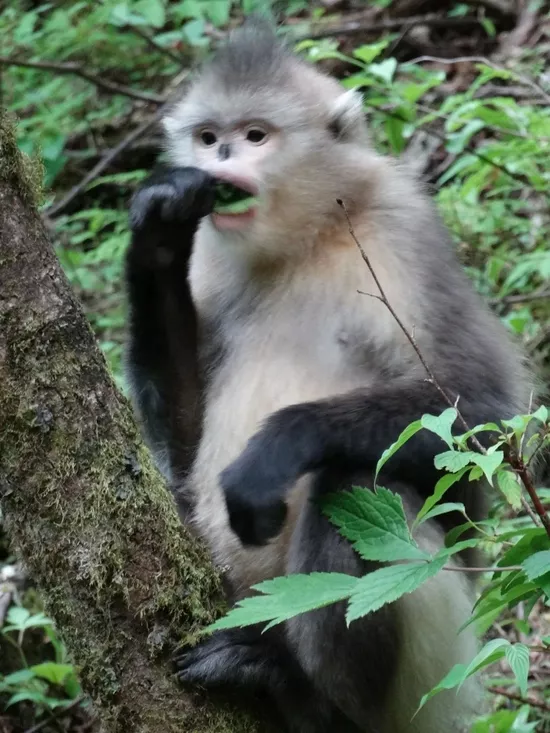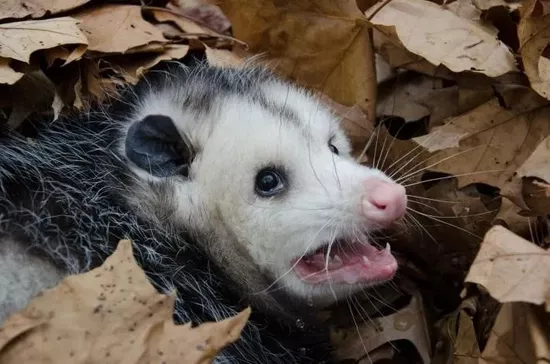Recently, a new "national character face" online red monkey became popular on the Internet and became a new round of animal traffic v This monkey has a high collision with the cartoon image of "Grandpa Niu" in big ears. If this "square faced monkey" will bring goods, I believe it may become a new star in the live broadcasting industry. It's a pity that I'm not a monkey, otherwise the national character face will not be unknown for more than 30 years.

Part.1
Hello, I'm black hat monkey
This popular monkey is called black hat monkey. Because of its thick black hair on its head, it looks like wearing a black hat, so it is named "black hat monkey". Its tail is very long and can be grasped. It is one of the few capuchins that can roll its tail in a circle.

In fact, the black hat macaque is not a native species of China. It is mainly distributed in South America to the east of the Andes mountains and inhabits humid subtropical or tropical forests, but it is also found in dry forests, corridor forests and secondary forests. In northwestern Argentina, these monkeys live in mountain forests at an altitude of 200 to 1100 meters. They like to move in the understory and the middle canopy of the forest. They often come down from trees to look for food and play.
Part.2
Black hat monkey: in addition to looking like, we are also relatives
In the animal kingdom, primates are closest to humans. According to biological classification, the black capped macaque belongs to the order under the broad nose, while human beings belong to the order under the narrow nose. The black capped macaque and human beings can be traced back to the suborder of apes under primates at most. Although they belong to different families, they are very close in evolution.
Primates' facial features, including face shape, are closest to humans. The net red and black hat macaque is like a monkey. Coupled with the natural replacement of its hair, it forms the so-called "national character face" under the fermentation of the network. But in fact, it is not uncommon for primates to look like human faces, such as the Yunnan golden monkey with red lips and Moxi dry hair.

How close is the black hat monkey to Human Kinship? Not only do they look like humans, primates are more similar to humans in social structure and behavior. For example, polygamy, polygamy and monogamy in primates once existed in human society; Primates' aunt behavior (the care of non mother individuals in the group for infant monkeys), hierarchical status, grandmother's care for grandchildren, etc. can also be found in human society.
Black capped macaques belong to the group life of polygamy. There are 8-15 individuals in a group. The monkey group is led by a dominant male monkey (the main male monkey). As the leader of the monkey herd, the main male monkey has two powers:
The first power is the dominance of food, that is, the main male monkey has the first choice in food. When there is a shortage of food and there is a new food source, the main male monkey always eats first. At the same time, with the permission of the main male monkey, the priority group can enjoy it together, while the subordinate male monkey must wait until the priority male monkey finishes eating, which is the rule of the monkey group. Priority groups usually include young monkeys and a few popular females.
The second power is that the main male monkey dominates the mating order of the monkey group and monopolizes the female resources. Only when the main male monkey is not present, other male monkeys have the opportunity to mate with the female monkey. However, in the last two days of the female's estrous cycle, the main male will almost stay close and will not let it mate with other males.
In addition, black capped monkeys mark their scent by using their urine and wiping their hands on their fur, which may be a way for males to show off their sexual maturity. Estrous females also try to attract the attention of the main male by following him and shouting loudly.
Since ancient times, there are as many responsibilities as there are powers, and the black hat monkey is no exception. As the main male monkey, although it has the right to mate, it should also bear the burden of protecting the monkeys. On weekdays, the main male monkey should protect the monkeys from natural enemies and other monkeys.
If another group of monkeys enters its range of activities, the main male will attack and drive the other group away. In addition, the main male monkey should always be on guard against incoming natural enemies, such as eagles. The main male monkey will call an alarm to attract the attention of natural enemies and help family members escape, so as to protect their families from predators.
Moreover, the black capped monkeys are very alert to predators. When they see natural enemies, especially eagles in the air, members of the monkeys will make sharp calls. Even if the eagles flying overhead are harmless, they will also make an alarm whistle.
There is almost no fixed breeding season for the black capped monkey, but most of the newborn may occur in the dry season or early rainy season. The gestation period of female monkeys is 150-160 days, with one fetus and rare twins. Once the males have reached maturity, they may leave their young males in the group at the age of 7, and their sexual maturity may be left to the females after they are born.
The female is very tolerant of her cubs and has aunt behavior. If a little capuchin monkey is separated from its mother, other members of the monkey group will respond to the little capuchin monkey's distress signal. The main male usually tolerates his offspring, but has great hostility to the cubs from the previous main male.
In the forest, black capped monkeys communicate through sound. They have a wide variety of calls, which can be roughly divided into four categories: those that contact groups, those that contact individuals, those that end aggression, and those that remind groups of danger. In addition, gestures and facial expressions are also widely used in the communication of black hat monkeys. Combing each other's hair between individuals is also an important social behavior, which is to express good behavior to other companions.
Part.3
Some special cooking habits
Black capped monkeys are omnivorous animals. Fruit is their main food, and because they have strong jaws, they can eat larger fruits than other kinds of capuchins. In addition, the food of the black hat monkey also includes plants, seeds, eggs, insects, reptiles, birds and small mammals (such as opossum).

In the dry season, when food is scarce, they even feed on the pith of palm trees. The foraging behavior of black capped monkeys is not elegant, but a noisy and destructive activity. They move from one tree to another, tearing up vegetation and cracking nuts on branches; Their way to find vertebrates and invertebrates is to destroy dead plants and capture anything inside. Black capped monkeys like to be "sole eaters", and they usually don't share their food with other group members.
In the forest ecosystem, the black hat monkey can hunt small animals. It is an important part of the food web and plays a positive role in maintaining the stability of the ecosystem. When they eat fruit, they will spread seeds and promote forest replacement through fecal excretion.
In the forest, the black cap monkey and the squirrel monkey are good friends. Squirrel monkeys follow the black capped monkey to find new food sources, which can save their foraging time. In order to find food more effectively, squirrel monkeys usually initiate mixed group interaction first (that is, two monkey groups are mixed together). However, this connection does not seem to be good for the black hat monkey.

At present, the black hat macaque is not an endangered animal, but is listed as a species of concern by the World Conservation Union (IUCN). This is because the black hat monkey has high reproductive potential and flexible habitat selection. It can not only adapt to the primitive forest, but also is not picky about the secondary forest.
Therefore, at present, hunting and habitat destruction factors will pose a more serious threat to other primates, while the impact on the black hat monkey is relatively small. However, some subspecies of the black capped macaque (taxa below the species, such as the subspecies of gray wolf) may be threatened.
Animals are our close friends and share the same earth home with us. Our earth has become so vibrant because it has animals as precious as black hat monkeys. To love animals is to love our home.
Produced by: China Science Expo
Author: Zhao Xumao, young researcher of Lanzhou University
Lei Kexin, School of journalism, Chongqing University
The article only represents the author's point of view, not the position of China Science Expo
This article was first published at the kepubolan